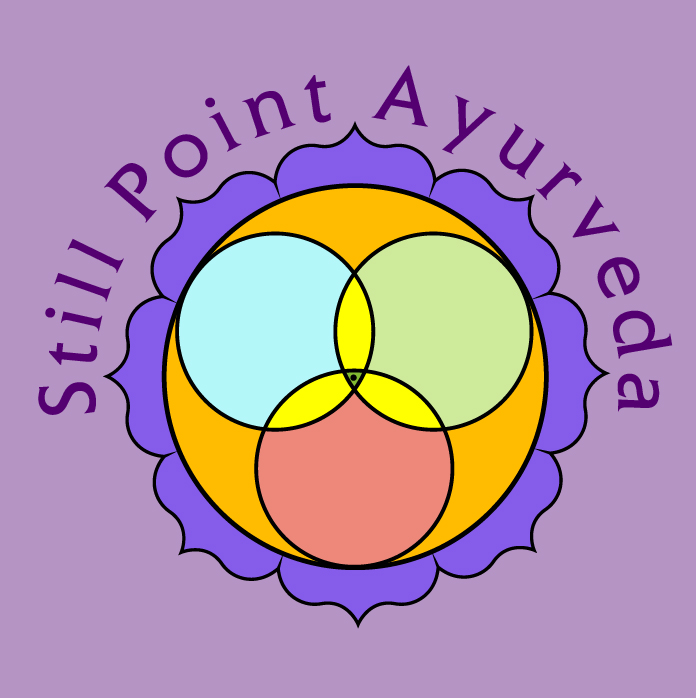SEASONAL CLEANSE IS A MUST! (RTUCARYA AND RTUSANDHI)
/We can not afford to avoid proper seasonal practices that include cleanses, that are appropriately designed to address the doshas at the various stages of their manifestation and presentation. Modern-day cleanses, and westernized versions of cleanses will not suffice, especially compared to the vast scientific body of knowledge that Ayurveda possesses and has been implementing for thousands of years to millions of people.
From the standpoint of Ayurveda, seasonal transitions (rtu sandhi) are an important time of year that is essential to managing the momentum of the doshas. Typically, Ayurveda shares an important concept known as Shat Kriya Kala, otherwise known as the six stages of disease formation which can occur when the doshas have begun to not only become vitiated but also develop a gravity that can lead to major diseases.
When the doshas are kept in a state of equilibrium, they will continue to sustain health, promoting health and well-being, but when they accumulate without alleviation, they become the causes of disease and death. What generally keeps the doshas is this cycle known as caya-prakopa-prashaman (accumulation, aggravation, alleviation.) The doshas accumulate (caya) in many ways such as what like foods can increase them and what seasons the doshas enter into of like kind (samanya); they gain momentum the more involved they are with the like qualities of a particular food, exercise, lifestyle practice, season, and time of life which develops into an aggravated state (prakopa); but when the doshas can follow up with a natural reduction of their like qualities (vishesha) and practices of diet (ahar) and lifestyle (vihar), which include dinarcarya (daily practices) and rtucarya (seasonal practices), the doshas are alleviated (prashaman) and thwart any potential disease manifestation.
In the event that the doshas progress from caya (accumulation) to prakopa (aggravation) and do not pass the phase of prashamana (alleviation), they instead will progress to prasara (spreading.) This is the point which is where the doshas are now looking for a new place to develop into and continue with the direction of vitating the body and tissues further (sthana samsraya) causing an invasion and lodging where premonitary symptoms develop, eventually leading to a diagnosable condition manifesting itself (vyakta), and then complications (bheda.) When the doshas are going through their normal cycle and the dinacarya and rtucarya practices are in place, which also include nidana parivarjana (avoiding the causative factors that cause the doshas to go out of homeostasis, to begin with), the shat kriya kala (6 stages of disease manifestation) could desist.
Relating to the seasonal cleansing periods during the windows of seasonal transition, some disease that could either develop or worsen as per Ayurvedic science, but include health challenges (not exclusively) such as skin diseases (kustha), sleep issues (ratri roga), hyperacidity (amlapitta), allergies (pratishay), and diarrhea (atisara.)
Amongst the classical texts of Ayurveda including Caraka, Sushruta, and Vagbhata, they discuss the imperativeness of seasonal cleansing to be done for most ages and between the ages of 12 and 60. This was something discussed long ago and, if anything, has more relevance now than ever before considering the state of the world we reside in which has global calamities that continue to gain more drive toward climate issues. The changes in all the elements surrounding us are becoming more and more volatile, unpredictable, and intensified with each day, with each month, with each season, and with each year. The doshas of the earth are affecting the doshas of the human body and there is no escaping it. We have increased fires, producing smoke that has high levels of CO, CO2, CH4,which is increasing acidity levels not only in the air but also in the soil and bodies of water that the residue of this smoke touches; sea levels are rising with the melting of glaciers which also are releasing what has been dormant for thousands of years. Storms are getting more aggressive and the atmosphere is becoming inundated. All of this is speeding up processes such as earlier or disrupted seasons/and seasonal changes, to changing the chemistry of infinite ecosystems across the planet. (See below in resources the five-part series on calamities below) This can not be ignored.We will continue to see a rise of pandemics and other health issues such as cancer, respiratory issues, anxiety/depression, and other mental health disorders.
Therefore, we refer to and depend on the wisdom of these sages and scientists such as Caraka, Sushruta, and Vagbhat to help support the situation we find ourselves in. One important must is the use of proper seasonal cleansing, which can occur on various levels that include either mitigating the doshas, reducing their increased speed and accumulation levels, such as with shamana cikitsa or palliative/pacificatory care, to aggressive expulsion of the doshas, such as panchakarma. There are a few options and many of these options can be adapted to individual needs and capacities. It is up to the vaidya (Ayurvedic Physician) to determine what is possible, per a case-by-case basis. Cleaning is imperative to reduce the doshic load that is rapidly building faster than we can keep up with. Adhering to these practices of Ayurveda will make significant changes and in so many ways for many years to come. We all have to keep our eyes on the ball as much as possible in an age of elemental and seasonal afflictions.
Click HERE for cleanse protocols.
REFERENCES
EARTH/SOIL CONTAMINATION (part 3)
SEASONAL SEASONAL CONTAMINATION (part 5)
DISCLAIMER: This information is meant for educational purposes only and is not considered medical advice. Any changes in lifestyle should be reviewed by a qualified practitioner and/or primary care physician if you are currently under their care for specific conditions.

